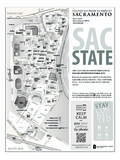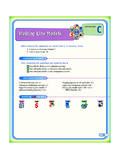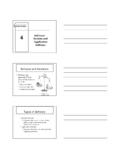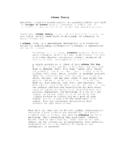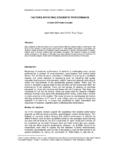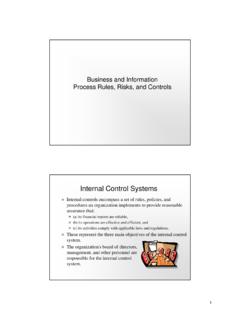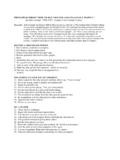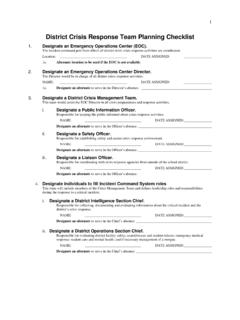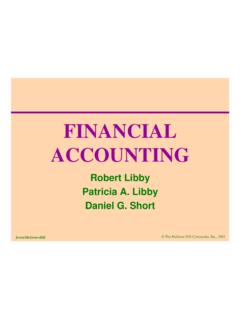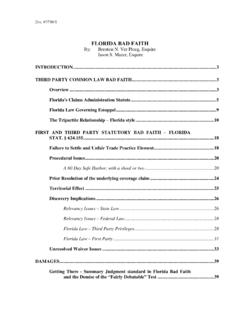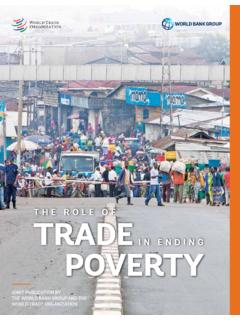Transcription of Chapter 6: THE MASTER BUDGET - csus.edu
1 Chapter 6: THE MASTER BUDGET . H. Horngren 13e 13. 1. W OF THE MASTER . VERVIEW. OV ET. R BUDGE. 2. 3. Learning Objective 1: Describe the MASTER BUDGET .. The MASTER BUDGET is the g prepared initial BUDGET p p before the start of a period p and explain its benefits.. benefits include planning, coordination, and control Well-managed companies usually follow an annual BUDGET cycle including the following steps: Plan the performance of the company as a whole and of the subunits within the company. Senior managers g communicate to subordinates a set of expectations p against g which performance will be measured. Management accountants investigate variations from plans, and corrective action may be taken.
2 Managerial accountants and managers take into account market feedback, feedback changed conditions, and their own experiences in making plans for the upcoming period. 4. [EXERCISE]. [SOLUTION]. 5. Learning Objective 2: Describe the advantages of budgets.. advantages include coordination,, communication,, performance p evaluation and managerial motivation 6. Learning Objective 3: Prepare the operating BUDGET .. the budgeted income pp g schedules .. such as cost statement and its supporting of goods sold and nonmanufacturing costs [EXERCISE]. 7. Learning Objective 3: Prepare the operating BUDGET .. the budgeted income pp g schedules.
3 Such as cost statement and its supporting of goods sold and nonmanufacturing costs [SOLUTION]. 8. Learning Objective 4: Use computer-based financial planning models in sensitivityy analysis. y .. for example, p , understand the effects of changes in selling prices and direct material pries on budgeted income [EXERCISE]. 9. Learning Objective 4: Use computer-based financial planning models in sensitivityy analysis. y .. for example, p , understand the effects of changes in selling prices and direct material pries on budgeted income [SOLUTION]. 10. Learning Objective 5: Explain kaizen budgeting.. budgeting for continuous p improvement in operations p and how it is used for cost management.
4 To reduce costs KAIZEN BUDGETING. Kaizen budgeting is a budgetary process that explicitly incorporates continuous improvement during the BUDGET period. Kaizen is about working smarter, not working harder. The idea is to find better ways, not just faster ways to produce the product or service. [EXERCISE]. 11. [SOLUTION]. 12. Learning Objective 6: Describe responsibility centers.. a part of an g organization that a manager g is accountable for and responsibility accounting.. measurement of plans and actual results that a manager is accountable for A responsibility center is a part part, segment segment, or subunit of an organization whose manager is responsible for a specified set of activities.
5 Responsibility accounting measures the plans, budgets, actions, and results of each responsibility center. Four types of responsibility centers are: 1. Cost center, in which the manager is responsible for costs only. The accounting department would be accounted for as a cost center. 2. Revenue center, in which the manager is accountable for revenues only. 3. Profit center, in which the manager is accountable for revenues and costs. For example, the shoe department in a department store may be accounted for f as a profit center. 4. Investment center, in which the manager is accountable for revenues and costs, but also the investment (or assets) under his control.
6 A single store or a division within the company may be accounted for as an investment center. A key to successful responsibility accounting is to properly identify the costs a manager isi responsible ibl ffor. A. Any costs t over which hi h th the manager lacks l k controlt l should h ld not be a part of his evaluation. 13. Learning Objective 7: Explain how controllability relates to responsibility g .. managers accounting. g cannot control all of the costs that they are accountable for; responsibility accounting focuses on obtaining information, not fixing blame Controllability is the degree of influence that a specific manager has over costs, costs revenues, revenues or related items for which he or she is responsible.
7 A controllable cost is any cost that is primarily subject to the influence of a given responsibility center manager for a given period. period This controllability can be difficult to pinpoint for two reasons: 1. Few costs are clearly under the sole influence of one manager. 2 With a long enough time span 2. span, all costs will come under someone someone'ss control control. Most performance reports cover a period of one year or less, so this does not normally present a problem. Key Point: Someone cannot be held responsible for that which they cannot control. Control must be equal to the responsibility given.
8 Given 14. Learning Objective 8: Recognize the human aspects of budgeting.. to engage g in the budgeting subordinate managers g g process p A BUDGET is usually more effective if the lower-level managers have input into the BUDGET process. Through this process of participatory budgeting, the manager obtains ownership in the BUDGET and is more likely to achieve budgetary success. Managers frequently play games with budgets and build in budgetary slack. This is the practice of underestimating revenues, overestimating costs, or overestimating time in order to make the BUDGET targets more easily achievable. In budgeting in multinational companies three adjustments must be made: Operating results must be translated into a common currency for external financial reporting.
9 A currency gain or loss must be budgeted and recognized when currencies are translated. The Th political, liti l legal, l l and d economic i environments i t mustt be b understood. d t d 15. Appendix: The Cash BUDGET [EXERCISE]. Required: 1. Calculate Brenton's budgeted total cash receipts in April. 2. Calculate Brenton's budgeted total cash payments in March for inventory purchases. purchases 16. Appendix: The Cash BUDGET [SOLUTION]. Required: 1. Calculate Brenton's budgeted total cash receipts in April. 2. Calculate Brenton's budgeted total cash payments in March for inventory purchases. 17. QUIZ QUESTION.
10 Hester Company budgets on an annual basis for its fiscal year. The following beginning and ending inventory levels (in units) are planned for the fiscal year of July 11, 2004 through June 30. 30, 2005. 2005. 7-1-04 6-30-05. Raw material1 40,000. , 10,000. , Work in process 8,000 8,000. Finished goods 30,000 5,000. 1 Th (3) units Three i off raw material i l are needed d d to produce d each h unit i off fi finished i h d product. d [CMA Adapted] If Hester Company plans to sell 500,000 units during the 2004 2005 fiscal year, the number of units it would have to manufacture during the year would be: a 505. a.
